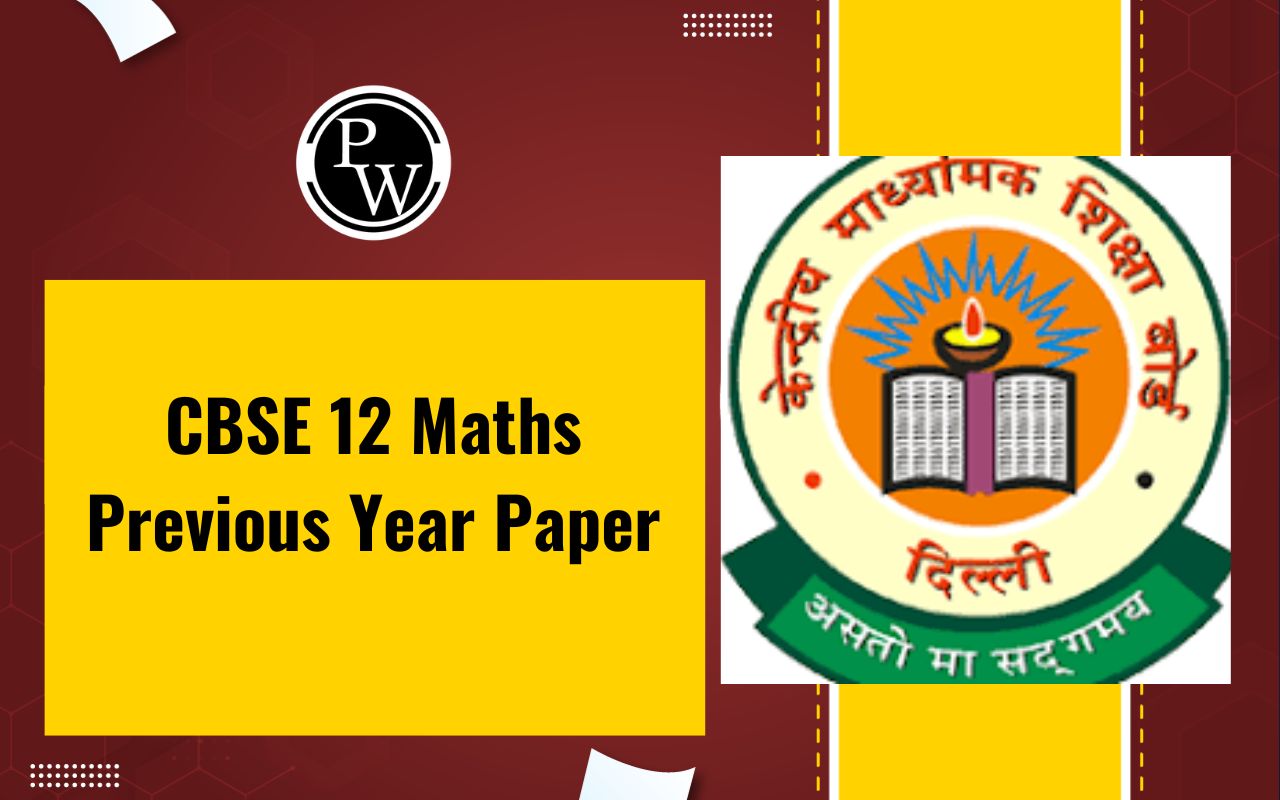
NCERT Solutions for Class 12 Biology Chapter 12: NCERT Solutions for Class 12 Biology Chapter 12 Ecosystem provide detailed answers to all the textbook questions, helping students understand key concepts such as ecosystem structure, energy flow, productivity, nutrient cycling, and ecological succession.
By practicing these solutions students can effectively prepare for board exams and gain insights into the dynamic relationships within ecosystems.NCERT Solutions for Class 12 Biology Chapter 12 Overview
NCERT Solutions for Class 12 Biology Chapter 12 Ecosystem provide a detailed overview of ecosystems, focusing on their structure, functioning, and significance in maintaining ecological balance. The chapter introduces the concept of an ecosystem, explaining its two main components: biotic (living organisms) and abiotic (non-living factors like air, water, and soil). It explores the flow of energy through food chains and webs, highlighting the roles of producers, consumers, and decomposers. The chapter also discusses concepts like primary productivity, nutrient cycling, and ecological succession. It emphasizes the importance of ecosystems in sustaining life on Earth and the need for their conservation to ensure environmental stability.NCERT Solutions for Class 12 Biology Chapter 12 PDF
For easy access, you can find the NCERT Solutions for Class 12 Biology Chapter 12 Ecosystem PDF link below. Simply click on the link to download or view the solutions:NCERT Solutions for Class 12 Biology Chapter 12 PDF
Here are the NCERT solutions for Chapter 12 Ecosystem from Class 12 Biology.1. Fill in the blanks.
(a) Plants are called _________ because they fix carbon dioxide.
(b) In an ecosystem dominated by trees, the pyramid (of numbers) is_________ type.
(c) In aquatic ecosystems, the limiting factor for the productivity is_________.
(d) Common detritivores in our ecosystem are_________.
(e) The major reservoir of carbon on earth is_________.
Solution:
(a) Autotrophs Plants are called autotrophs because they fix carbon dioxide (b) inverted In an ecosystem dominated by trees, the pyramid (of numbers) is inverted type. (c) Light In aquatic ecosystems, the limiting factor for the productivity is light. (d) earthworms Common detritivores in our ecosystem are earthworms. (e) Oceans The major reservoir of carbon on earth is oceans.2. Which one of the following has the largest population in a food chain?
(a) Producers
(b) Primary consumers
(c) Secondary consumers
(d) Decomposers
Solution:
Answer: (d) Decomposers
Decomposers, such as bacteria and fungi, make up the largest population in a food chain as they break down dead organic matter and recycle nutrients back into the ecosystem.3. The second trophic level in a lake is
(a) Phytoplankton
(b) Zooplankton
(c) Benthos
(d) Fishes
Solution:
Answer: (b) Zooplankton
In aquatic ecosystems like lakes, zooplankton are the second trophic level as they are primary consumers, feeding on phytoplankton, which are the producers.4. Secondary producers are
(a) Herbivores
(b) Producers
(c) Carnivores
(d) None of the above
Solution:
Answer: (d) None of the above
There are no secondary producers in ecosystems. Secondary production refers to the generation of organic matter by consumers, which includes primary consumers (herbivores) and secondary consumers (carnivores), but they are not producers.5. What is the percentage of photosynthetically active radiation (PAR) in the incident solar radiation?
(a) 100%
(b) 50 %
(c) 1-5%
(d) 2-10%
Solution:
Answer: (c) 1-5%
Photosynthetically active radiation (PAR) constitutes about 1-5% of the total solar radiation, which plants use for photosynthesis.6. Distinguish between
(a) Grazing food chain and detritus food chain
(b) Production and decomposition
(c) Upright and inverted pyramid
(d) Food chain and Food web
(e) Litter and detritus
(f) Primary and secondary productivity
Solution:
(a) Grazing food chain vs. Detritus food chain- Grazing food chain: Energy is derived from sunlight, beginning with producers (plants) consumed by herbivores and then by carnivores.
- Detritus food chain: Energy comes from decomposing organic matter (dead plants and animals), consumed by decomposers and detritivores, forming a smaller-scale system.
- Production: Refers to the creation of organic matter by producers (plants) using sunlight.
- Decomposition: The breakdown of dead organic matter by decomposers into inorganic substances, recycling nutrients.
- Upright pyramid: Shows a decrease in biomass and number of organisms as you move up trophic levels (typical in ecosystems like grasslands).
- Inverted pyramid: Shows a larger biomass at higher trophic levels (e.g., in aquatic ecosystems with fewer producers but large consumers).
- Food chain: A linear sequence showing who eats whom in an ecosystem.
- Food web: A network of interconnected food chains, showing multiple feeding relationships.
- Litter: Refers to organic waste above the ground like leaves and dead plants.
- Detritus: Composed of dead organic material like decomposing plants and animals.
- Primary productivity: The rate at which producers (plants) generate biomass through photosynthesis.
- Secondary productivity: The rate at which consumers (animals) generate biomass from consuming plants or other animals.
7. Describe the components of an ecosystem.
Solution:
An ecosystem consists of two main components: abiotic (non-living) and biotic (living) factors. Abiotic components include elements like water, temperature, light, and soil, which influence life in an ecosystem. Biotic components include producers (plants), consumers (animals), and decomposers (fungi and bacteria), which all interact within the ecosystem, supporting energy flow and nutrient cycling.8. Define ecological pyramids and describe with examples, pyramids of number and biomass.
Solution:
Ecological Pyramids:
An ecological pyramid is a graphical representation that illustrates different ecological parameters such as the number of individuals, the biomass, or the energy present at each trophic level in an ecosystem. These pyramids help in understanding the relationships between various organisms in a food chain. The producers (like plants) are at the base, while the top-level consumers (like apex predators) are at the apex. There are three main types of ecological pyramids:Pyramid of Numbers :
- This pyramid represents the number of individuals at each trophic level in a food chain.
- The shape of this pyramid can be either upright or inverted, depending on the number of individuals at different levels.
- Example : In a grassland ecosystem, the pyramid is upright. The number of producers (plants) is the highest, followed by herbivores, secondary consumers, and tertiary consumers. The pyramid is inverted in a parasitic food chain, where producers (plants) support a large number of fruit-eating birds, which, in turn, support a few species of insects.
Pyramid of Biomass :
- This pyramid represents the total quantity of living matter (biomass) at each trophic level.
- It can also be upright or inverted.
- Example : In a grassland or forest ecosystem, the pyramid is upright, with the biomass of producers being greater than that of consumers. However, in a pond ecosystem, the pyramid is inverted, as the biomass of fish (top consumers) is greater than the biomass of zooplankton (primary consumers).
Pyramid of Energy :
- The energy pyramid shows the flow of energy at each trophic level in an ecosystem.
- Unlike the pyramids of numbers and biomass, the pyramid of energy is always upright.
- This is because energy is lost as heat when it flows from one trophic level to the next.
- Example : The amount of energy available at each level decreases as you move up the pyramid due to energy loss at each step of the food chain.
9. What is primary productivity? Give brief description of factors that affect primary productivity.
Solution:
Primary productivity refers to the rate at which producers (plants) generate biomass through photosynthesis. Factors like sunlight, temperature, water availability, and nutrient levels in the soil affect primary productivity.10. Define decomposition and describe the processes and products of decomposition.
Solution:
Decomposition is the natural process through which complex organic matter from dead animals and plants is broken down into simpler inorganic materials, such as water, carbon dioxide, and other nutrients. This process is carried out by decomposers like bacteria, fungi, and detritivores (e.g., earthworms) and plays a vital role in recycling nutrients in ecosystems. The process of decomposition occurs in several stages:Fragmentation :
- This is the first phase of decomposition, where detritus (dead organic matter) is broken down into smaller particles by the action of detritivores, such as earthworms. The detritus is physically fragmented into finer particles, making it easier for microbes to further degrade it.
Leaching :
- In this phase, water-soluble nutrients are dissolved and washed away from the decomposing material. These nutrients penetrate into the soil layers, where they may become unavailable to plants as salts.
Catabolism :
- During catabolism, decomposers like fungi and bacteria release enzymes that break down the organic matter into simpler compounds. This process involves the enzymatic degradation of complex organic molecules into simpler forms.
Humification :
- This stage results in the formation of humus, a dark, colloidal substance. Humus is rich in nutrients and are a reservoir of nutrients for plants. It improves soil structure and water retention.
Mineralization :
- The final stage of decomposition involves the breakdown of humus by microbes. Through this process, organic matter is further degraded, and inorganic nutrients such as water, carbon dioxide, and other minerals are released into the soil. Mineralization is essential for replenishing the soil with nutrients, which can then be used by plants.
11. Give an account of energy flow in an ecosystem.
Solution:
Energy flows through an ecosystem from the Sun to producers (plants), then to herbivores and carnivores in a series of trophic levels. At each level, energy is transferred, but only about 10% of energy is passed on to the next trophic level, with the rest being lost as heat. This is known as the 10% law of energy transfer.12. Write important features of a sedimentary cycle in an ecosystem.
Solution:
Sedimentary cycles involve nutrient elements like phosphorus and sulfur, which are stored in the Earth's crust. These cycles are slower and less perfect because nutrients can be sealed in sediment for long periods, delaying their return to the ecosystem.13. Outline salient features of carbon cycling in an ecosystem.
Solution:
Carbon cycling is a crucial ecological process in which carbon is exchanged between living organisms and the environment. It involves the movement of carbon through different forms such as carbon dioxide (CO₂), organic compounds, and inorganic carbon compounds. The main features of carbon cycling in an ecosystem are as follows:Photosynthesis :
- Plants, algae, and some bacteria absorb carbon dioxide from the atmosphere during photosynthesis. They convert CO₂ into glucose (C₆H₁₂O₆) and other organic compounds using energy from sunlight. This process is the primary way carbon enters the food chain.
Respiration :
- Both plants and animals release carbon back into the atmosphere through respiration. In this process, organisms break down glucose to obtain energy, releasing carbon dioxide as a byproduct.
Decomposition :
- When organisms die, decomposers like bacteria, fungi, and detritivores break down their organic matter, releasing carbon back into the environment in the form of carbon dioxide or methane (CH₄), depending on the oxygen availability.
Consumption :
- Herbivores consume plants, and carnivores consume herbivores. Through this trophic exchange, carbon moves up the food chain. Animals obtain organic carbon from the plants or other animals they consume.
Storage in Biomass :
- Carbon is stored in the biomass of living organisms (plants, animals, and microorganisms). It remains in the bodies of organisms until they die or are consumed by decomposers.
Fossilization :
- In certain conditions, the remains of dead organisms (e.g., plants and animals) may be buried and subjected to high pressure and temperature over millions of years. This leads to the formation of fossil fuels like coal, oil, and natural gas, which are carbon-rich.
Burning of Fossil Fuels :
- Human activities like burning fossil fuels for energy (e.g., in power plants, vehicles, and industrial processes) release stored carbon back into the atmosphere as carbon dioxide, contributing to the carbon cycle.
Ocean Absorption :
- Oceans absorb a significant amount of carbon dioxide from the atmosphere. Some of the carbon is used by marine plants for photosynthesis, and some is stored in ocean waters and sediments.
Volcanic Activity :
- Volcanic eruptions release carbon dioxide into the atmosphere from the Earth's interior. This is a natural process that contributes to the carbon cycle.
Role of Soil :
- Soils act as both a source and sink of carbon. They store carbon in the form of organic matter (humus) and minerals. Soil carbon is released into the atmosphere through respiration by soil microorganisms and plant roots.
Benefits of Solving NCERT Solutions for Class 12 Biology Chapter 12
Solving NCERT Solutions for Class 12 Biology Chapter 12 Ecosystem provide several benefits for students. These solutions not only help in understanding the chapter thoroughly but also play a vital role in exam preparation. Here are the key benefits: 1. Comprehensive Understanding of Ecosystems:- In-depth Knowledge: The NCERT solutions provide detailed answers to the questions, which helps students grasp the core concepts of ecosystems, including energy flow, nutrient cycling, food chains, food webs, and ecological pyramids.
- Accurate and Concise Answers: NCERT solutions are aligned with the syllabus and the exam pattern, making them ideal for exam preparation. They provide concise and accurate answers that directly address the questions asked in exams.
- Focus on Important Topics: The solutions highlight key topics such as productivity, energy flow, and types of ecosystems, which are often tested in exams.
- Step-by-Step Approach: The solutions break down complex topics into manageable parts, offering a step-by-step approach to solve problems, thereby enhancing conceptual clarity.
- Active Learning: By solving the questions on their own and then referring to the solutions, students develop critical thinking and problem-solving skills, which are essential for both exams and real-life scenarios.
- Helps in Revising: Practicing questions from NCERT solutions helps students revise and reinforce the concepts, making them more confident in tackling similar problems.
- All Topics Covered: The solutions ensure that every topic from Chapter 12 is covered comprehensively, which includes both theoretical and numerical problems.
- Efficient Problem Solving: Since NCERT solutions provide structured answers, students can quickly learn how to approach and solve various types of questions. This helps in managing time effectively during exams.
- Concepts for NEET and Other Exams: The ecosystem chapter is an important topic not only for board exams but also for entrance exams like NEET. Solving these solutions helps students gain a deeper understanding of concepts that are frequently tested in competitive exams.
NCERT Solutions for Class 12 Biology Chapter 12 FAQs
What is an ecosystem?
What is energy flow in an ecosystem?
What is the carbon cycle in an ecosystem?
What is the role of decomposers in an ecosystem?










